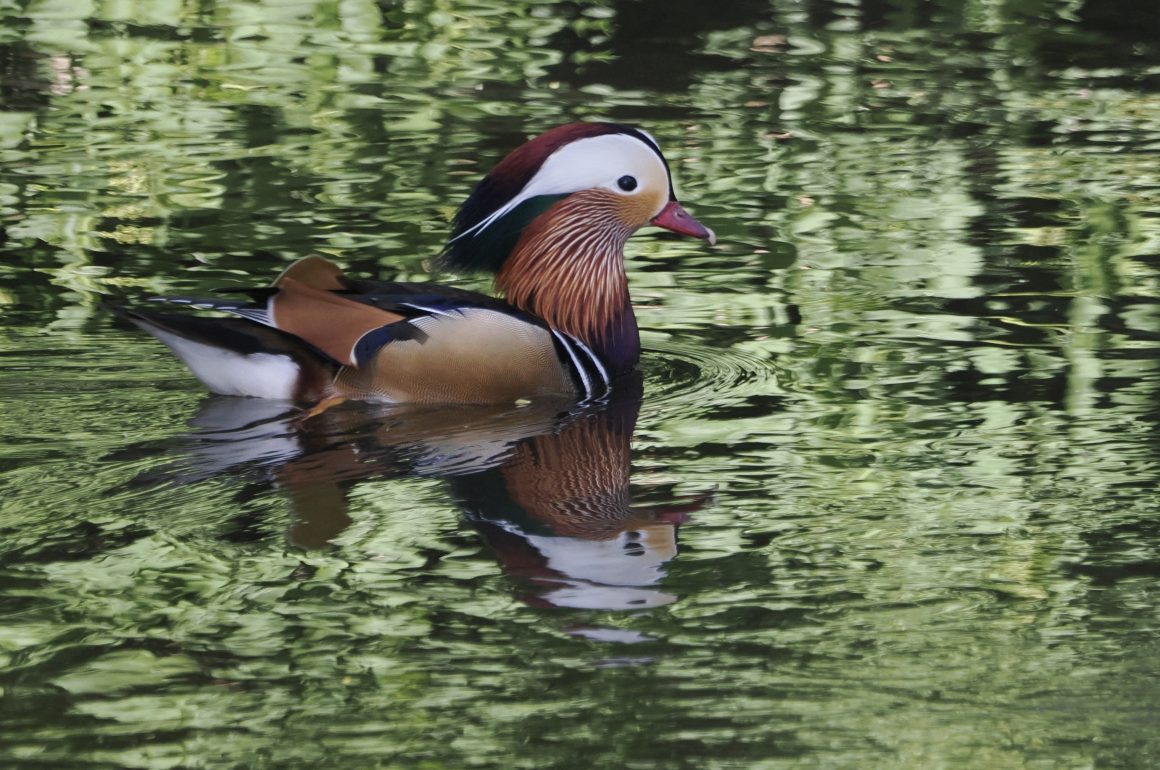
A birdwatching car conjures up an image of a tough 4×4, perhaps a Toyota Amazon or a Land Rover Defender. Mine is nothing of the sort. It’s a small two-seater convertible and at 22 years old, a little elderly. However, driving it topless on a country lane on a sunny spring day is a wonderful opportunity to enjoy the sights and smells of the English countryside. Perhaps a whiff of the heavy scent of hawthorn blossom, or a snatch of the song of a Whitethroat, while the possibilities for photography are far greater than they are from a car with a fixed roof.
Of course, topless motoring really requires sunshine, and that’s what we have been enjoying recently here in Suffolk. This may be of the driest areas of the UK, but even so the current lack of rain is unusual. In March we had a mere 4mm, while in April it was only 10mm, all of which fell on just one night in the middle of the month. Though much of the month was sunny, cold north-easterly winds kept the temperatures down, and it wasn’t until the end of the month that things warmed up.
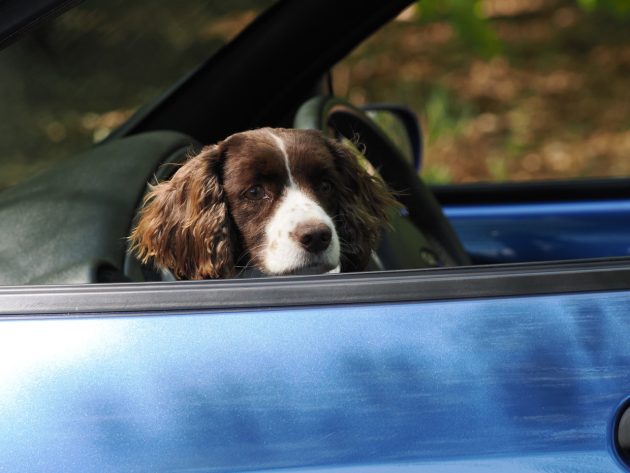
Emma the birdwatching spaniel
On the 29th the forecast was for a warm and sunny day, so I packed my lunch and set off for a day’s local birdwatching with the roof down, with Emma my spaniel sitting in the passenger footwell. She’s a seasoned birdwatching dog, while she also enjoys open-top motoring. It was chilly first thing, so I had to wear a fleece and have the heater on, but it wasn’t long before things warmed up.
My first stop was a church in the village of Santon Downham, in the middle of Thetford Forest. Here I parked the car and set on a bench just outside the churchyard, listening to a medley of birdsong, with Emma at my feet. I may know the calls and songs, but I enjoy the novelty of Merlin picking them up for me. Goldcrest, Nuthatch, Chiffchaff, Blackcap… all familiar sounds, while Merlin also noted the call of a Siskin, confirming what I had also heard. Merlin did beat me to it to pick up the song of a Firecrest, the bird I had specially stopped here to try and see. Eventually I spotted my quarry – quite a challenge, as (with the Goldcrest), the Firecrest is Europe’s smallest bird, at around 9cm. With its broad-white supercilium, topped by a black stripe and then that fire crest, it’s a real gem, too.
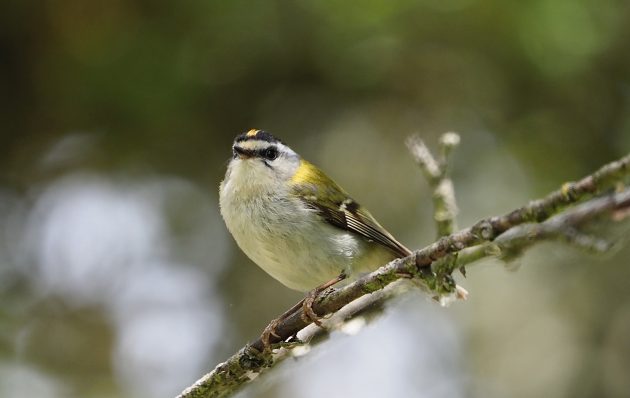
Firecrest: a gem of a bird
Firecrests only started breeding regularly in the UK in the second half of the 20th century, and they remain scarce and localised nesting birds in southern and eastern England. This was only my second sighting of the year in Britain.
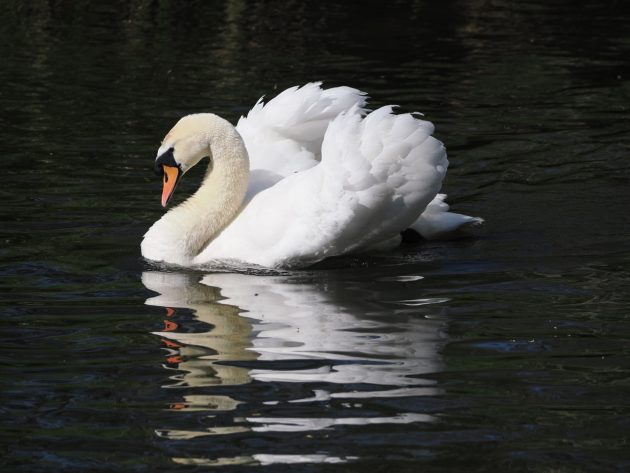
Mute Swan: like a galleon in full sail
Buoyed by this success, I then set off along the nearby footpath which runs alongside the Little Ouse river. This is one of my favourite walks, as it rarely fails to produce something interesting. Emma likes it too, as she doesn’t have to be on a lead. The first bird of note was a splendid drake Mandarin, while a Grey Wagtail, feeding along the opposite shoreline, was a new bird for the month. I couldn’t resist photographing a Mute Swan, sailing along the river like a miniature galleon, when a new bird for the year flew by – a Kingfisher. I’d already seen Kingfishers in Spain, but not here in the UK. The brightest of Europe’s birds, the turquoise flash of a passing Kingfisher always brings a smile.
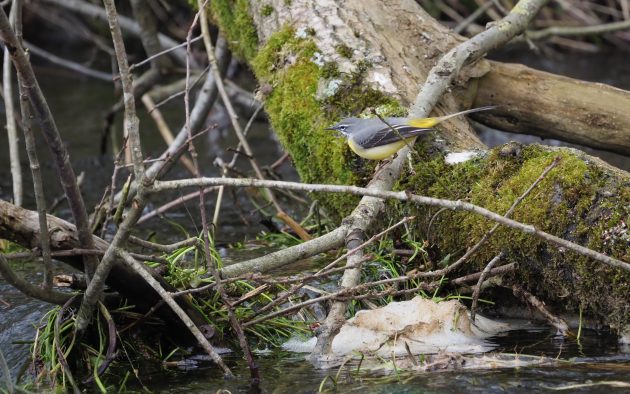
Grey Wagtail on the Little Ouse
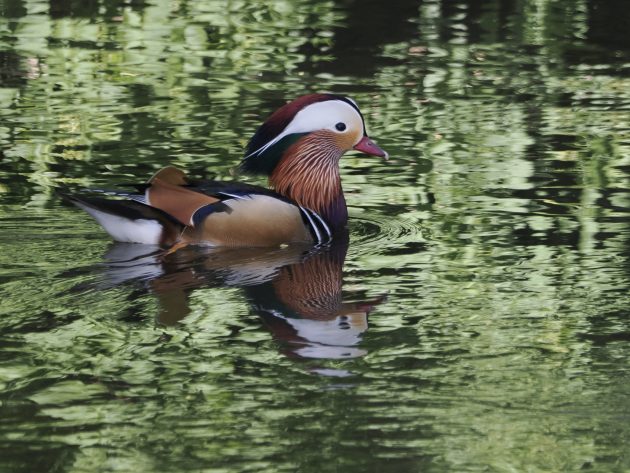
I can never resist photographing Mandarins
Next stop was Boughton Fen, a small local nature reserve that attracts relatively few human visitors, but is a reliable site for seeing Hobbies in the spring. These small, migrant falcons are drawn here by the dragonflies, an important source of food when they are fresh in from Africa. Sure enough, the Hobbies were back, and I was entertained by half a dozen birds, racing across the azure sky as they hawked for the dragonflies, which they catch with their feet, then eat on the wing. All the time Sedge Warblers sang from the reedbeds surrounding my bench, a Cuckoo called unseen from not far away, and a Bittern boomed several times. England in spring, when the sun is shining warmly and the birds are performing, is a great place to be.
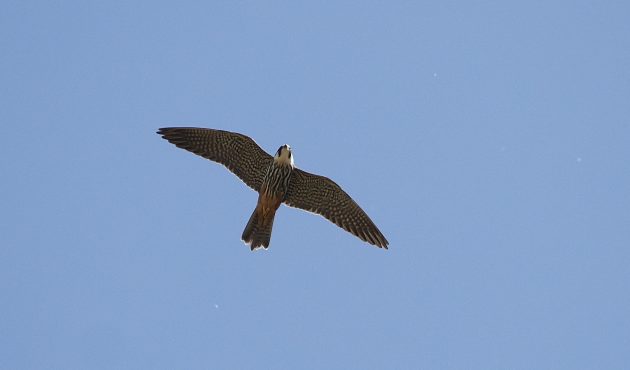
Hobby overhead. One of six that put up a great show
My next stop was the flat, cereal-growing fenland to the west of the small town of Feltwell. My target bird was Corn Bunting, and I soon spotted one, singing on a roadside wire. Corn Buntings have declined dramatically in England in the last 30 years, so they can be hard to find. This was my first in the UK this year. In contrast, in Extremadura they are one of the commonest birds, so I’d already seen hundreds earlier this year.
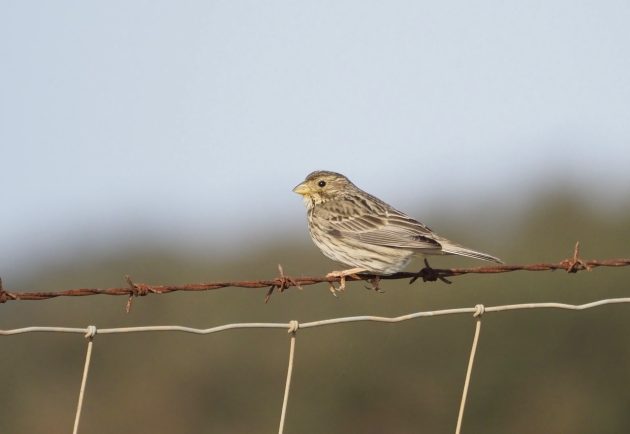
Though Corn Buntings may be abundant in Spain, they have declined sharply in the UK
Another bird to have declined sharply in the UK is the Yellow Wagtail. Though really a bird of wet meadows and marshy pastures, they also breed in cereal fields here in the flatlands. I found five, including one that cooperatively sat singing on a roadside perch, allowing me to take his portrait from the car. There are many different races of Yellow Wagtail. The British race, flavissima, lacks the blue head characteristic of birds of mainland Europe.
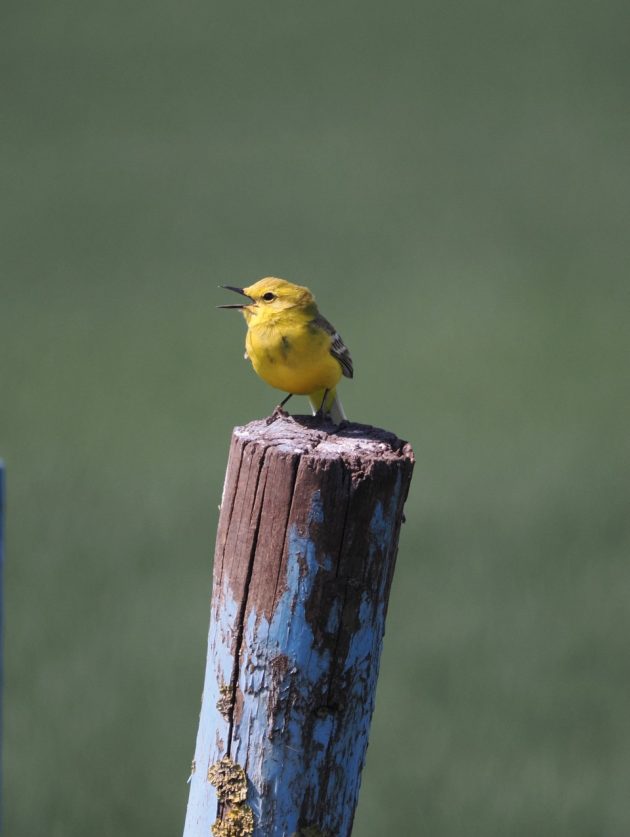
Yellow Wagtail of the British race, flavissima
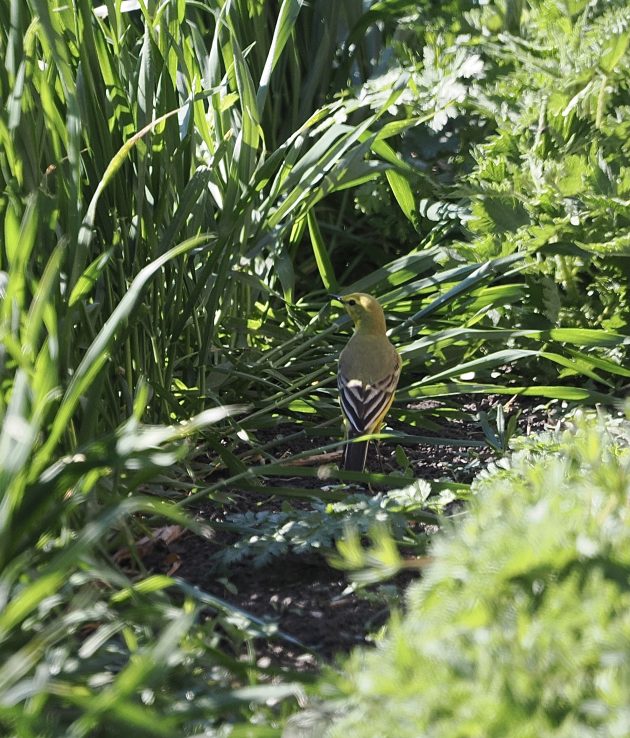
In the fens off eastern England Yellow Wagtails nest in cereal fields
With two new birds in the bag, I was keen to add a third. On my way home I stopped in the King’s Forest, where there had been reports of Turtle Doves. Alas, I missed the doves, but I was delighted to see, and photograph, my first Dingy Skippers of the year. I feel sorry for any butterfly called dingy – these skippers are hardly eye-catching, but they deserve a better name. They are very rare in Suffolk, only occurring at this one site. I’d never seen one before in April, as they are a species that generally emerges in May, but they had clearly responded to the early sun and the warmth.
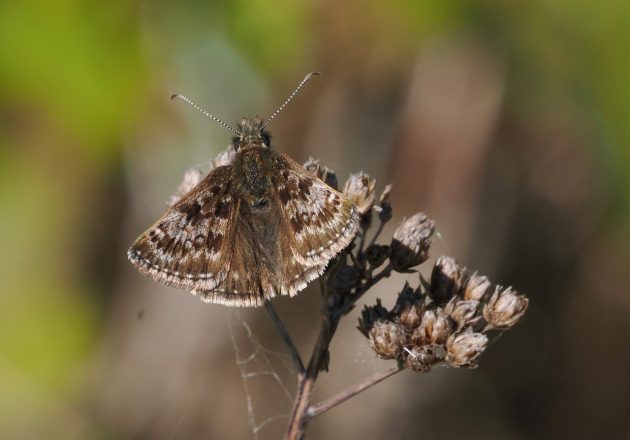
The Dingy Skipper can’t help its miserable name
My last stop of the day was Great Livermere, a large, shallow mere that often attracts unexpected migrants. I’ve seen a number of good birds here over the years, ranging from Long-billed Dowitcher to Black-necked Grebe. I was hoping for a migrant Black Tern, but instead was delighted to find a Whimbrel. Seeing an inland Whimbrel is always satisfying, so it was a good bird to end the day on. Only a few pairs nest in Britain (mainly in the Shetland Isles); this bird was probably heading for Iceland or northern Scandinavia. It was my 170th UK species of the year.
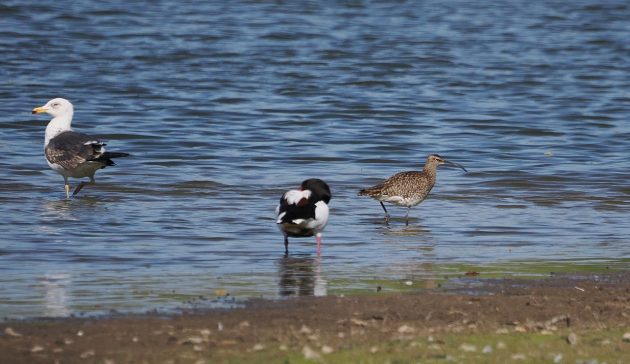
Lesser Black-backed gull, Shelduck and a migrant Whimbrel
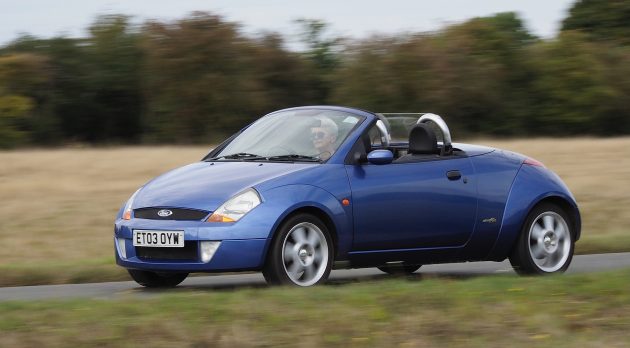
It’s not often that a car appears in 10,000 Birds (is this a first?). My birdwatching car. It’s only used in spring and summer


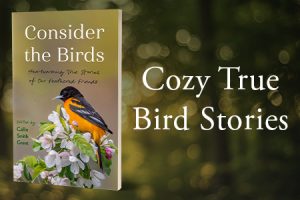

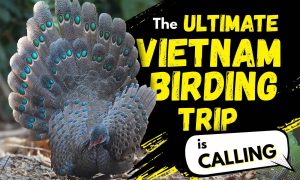
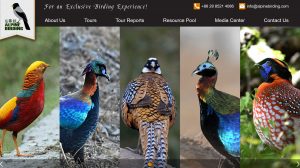
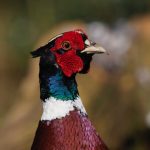
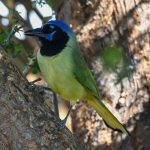
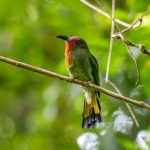

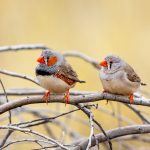
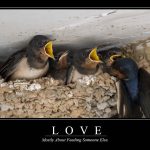

I always invite a friend to visit and bird with me in Florida. A few years back, she arrived in a Mustang convertible. It was great to watch the sky, as we drove along.
I once hired a Mustang convertible during a visit to Arizona. I saw some great birds from it.
Your car is so much cuter than a Mustang! Although it also appears to be a Ford car from the blue oval on the grill. Why don’t we get such cute cars?